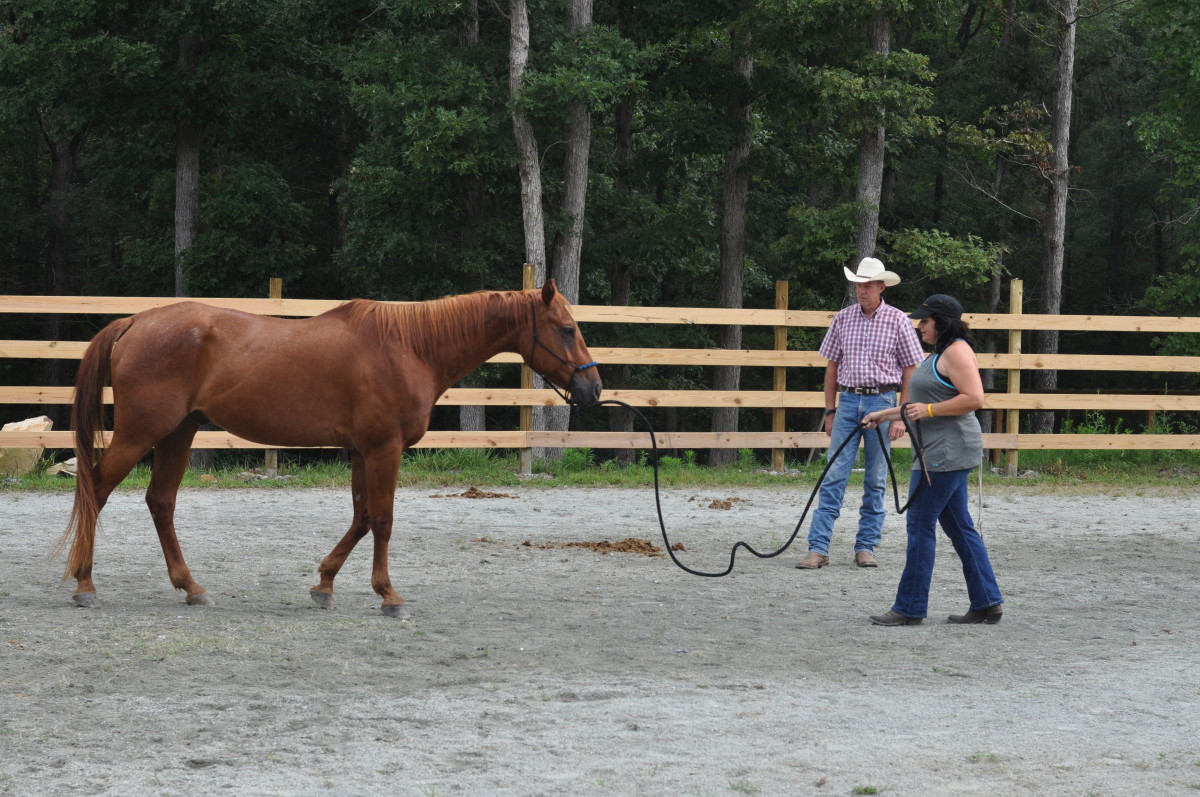
As I spend my days working with horses, here and on the road, I sometimes find myself wondering If everyone understands the purpose of groundwork the same way I do. Notice, I did say “understand as I do” opposed to what is correct or incorrect.
I’ve been involved with horses over 50 years and had times that I never did ground work, even in starting colts, to the other extreme of doing groundwork until the horse shut down from boredom or intolerance. I imagine we all can relate either from our own actions or observations of others.
So, if I may have a few moments of your time, I like to share my two cents worth on the topic.
I have several goals in mind when I start working with a horse, regardless of their age or training abilities, so I can help him become quiet, responsive, and soft in my presence. Let’s take these in order.
Quiet— Regardless of how I move my body or tools (flag, lead, the bucket I’m carrying, or the noise of the tractor, etc.), I want my horse to understand that he’s safe in my presence and doesn’t need to concern himself with the stimuli around him…the same as he would being in the herd. The horse doesn’t assume that he’s safe in the herd until he’s figured out the dynamics of the herd. So, that also applies to the time he spends with me. So, for me it’s quiet, to the horse It’s trust.
Responsive— How in tune is the horse to my requests and presence? If I walk into a strange environment with my horse on the lead and he’s acting like a June bug on a string, I can assure you that he is not in tune with me. It’s not the horses fault anymore than mine—I just don’t have his attention. Good groundwork builds a foundation as a great teacher or leader builds a foundation. When I’m around, I should be the center of his universe— his leader and it’s in his best interest, (his safety) to stay mentally with me. I don’t want this through fear or intimidation. Rather, he should recognize me as his leader and should always try to stay in touch with me. Maybe we could say we’re always in a two-way conversation. I strive for a response, not a reaction. I see a lot of horses that react from a cue to avoid the wack.
Soft— How much indirect and direct pressure must I use to get the desired results? Does the weight of the lead move him in a direction? Or, does it move him away from his distraction? Or does it require direct contact with an extreme amount of pressure to get a response? Can I move him around with my presence and soft touch, or is force always there? Does he relax by me with a soft eye, lowered head, and cocked foot? These last three things are so important to me in knowing that the horse is not uncomfortable mentally by being in my presence as I see with so many horses and handlers.
I do hope you recognized that a few words and and phrases are intentionally missing— respect, get the fresh out of them, punish, scold, teach a lesson. Through the years, and my understanding of how the brain works from my good friend Dr. Steve Peters, I’ve realized none of these things affect the horse in a favorable way. These “goals” only satisfy the ego and as we all know, our egos have gotten us all in a world of trouble!
So, to answer the last part of the title—How Much—would be tying in last month’s article, “Recognizing Try.” No matter what, we’re always looking for positive change in the horse, mentally and physically. You will never get positive physical change without positive mental change first. That might just be a topic for next month!
Have a good ride!
